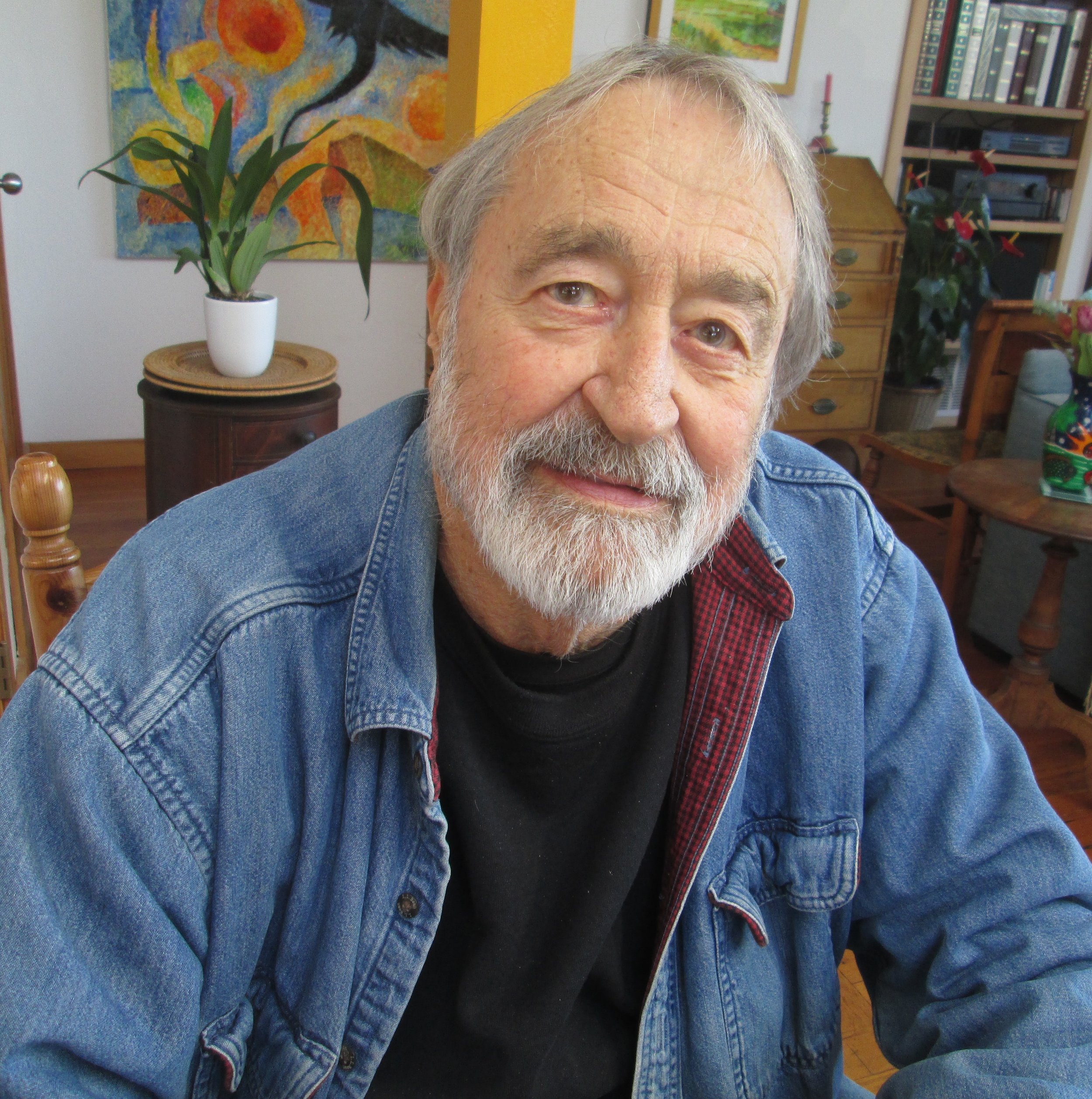By Steefenie Wicks, Sausalito Historical Society
Bill Kirsch in his magical environment.
Photo by Steefenie Wicks
The year was 1972 when Fred and Ada Schwartz first visited a home in Mill Valley that was built for Neil Davis who owned the No Name Bar in Sausalito, designed by Marin County architect Bill Kirsch. The Schwartz’s became intrigued with the structure. At the time the home would become vacant as the residents departed for their vacation in Mexico, so the Schwartz’s decided to rent the space. It was only later that Kirsch, who never met the Schwartz’s, was to learn their real names. They turned out to be John Lennon and Yoko Ono. Bill was told that when John stepped onto the master bedroom deck, he gazed out and said, “It’s like living in a windmill. I always wanted to live in a windmill.” The residence became known as the Windmill House.
This is just part of the magical atmosphere that a structure built and designed by architect by Bill Kirsch can induce. Kirsch has built over 300 buildings including residences and small commercial projects in California, Washington and Colorado. His long list of accomplishments even includes being part of a group exhibition at the Museum of Modern Art in Paris.
Born in Ohio, he has been part of the Sausalito community off and on since 1958. He would be the first to mention that no matter how many times he left Sausalito, he would always feel the need to return. He lived off of Gate 5 road across from the Vallejo, which was the home of both artist Jean Varda and philosopher Alan Watts. Kirsch tells of how he and his wife Felicity moved into his garage studio that he would eventually turn into a building that included studios, living space, and a community room because people were always dropping in. “It was a time when people would drop by no mater what the time day or night,” he recalls. “Finally, we put up a sign outside that said ’Closed Today’ just to get some relief from the foot traffic.”
Still Kirsch has fond memories of his sails with Varda aboard Varda’s boat the Cytheria. Watching the artist Varda’s bohemian life style fit right into the architectural designs that Kirsh would come to create.
Kirsch explained, “An aspect of my design philosophy is my attention to the so-called ‘peasant’ spaces as opposed to the ‘manor’ spaces. The idea of a ‘peasant ‘ space is open, not highly structured. It’s like creating spaces where the patterns of someone’s life can be highly descriptive rather than restricted.”
His work involved an interesting manipulation of materials, spaces and colors, providing the feeling that these were adventures for people. Kirsch was also designing green buildings before they were in fashion.
His life in Sausalito where he now resides is still full of the memories of the 10 years that he and wife Felicity lived on what he called Guru Alley. “I called it ‘Guru Alley’ because you never knew who would be walking down it,” he continued, “from the writers Aldous Huxley, Henry Miller and Anais Nin, to the poet Dylan Thomas, they could all be found strolling down ‘Guru ‘Alley, for a visit to Varda’s then stopping in to see what my current project was.”
Kirsch’s architectural career seemed to evolve with word of mouth. Kirsch has converted barns into residences, has rescued timbers from old wooden highway bridges, turning them into residences along with used lumber from San Francisco piers that he built into houses. As an expert carpenter, he was able to not only design but also build his designs himself. He has worked on a number of structures that are now part of the Sausalito floating homes community.
When asked what is one of the biggest changes he has seen in Sausalito, without hesitation he says the Art Festival.
He tells the story of how Varda started the Art Festival in the 1940’s but soon tired of the project and it became part of the Sausalito Chamber of Commerce. During the mid 1960’s Kirsch, also a productive artistic painter, along with a group of local artists took over the project from the Chamber. He felt that the Chamber was willing to hand over the event because they knew that Kirsch’s group would fail. As it turned out, the Art Festival that year made over $15,000.00; the admission price was 50 cents.
Kirsch’s architecture has appeared in over 30 magazines from Sunset Magazine to Life Magazine, along with the 22 residences that appeared in the Japan Interior Design magazine. He has received awards for homes, commercial/retail projects, along with a mini storage project in Berkeley.
Bill Kirsch’s philosophy has always been that understanding our environment is important for peace, joy and creativity in our lives. He feels that he has been able to help people compose their environment, and that Sausalito is the magical place that allows that to happen. He feels lucky to have found a place where this is possible. When you come to visit Bill and Felicity on their houseboat, standing in a room full of Bill’s paintings, as you look around you can feel that there is something magical about their whole environment that will last beyond their lifetime.

